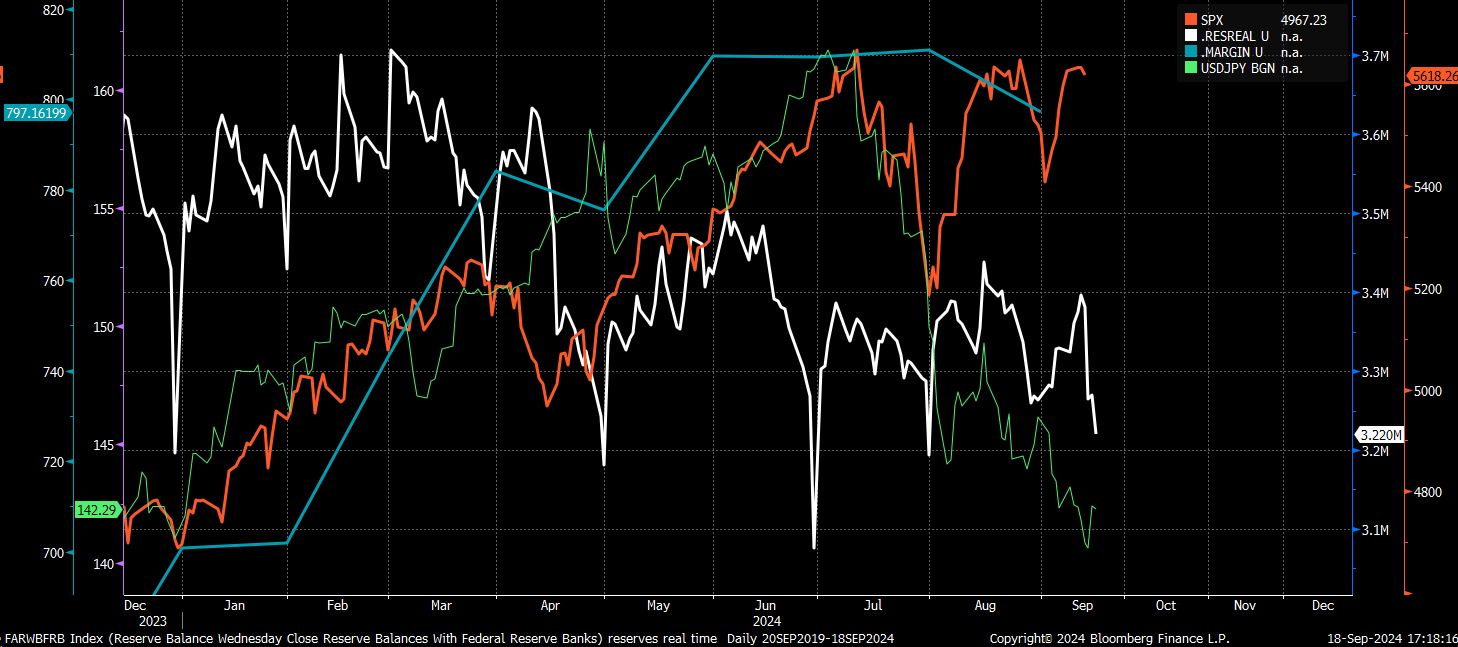After over two years of Fed pauses, pivots, and uncertainty, the Fed has finally kicked off a new cycle by cutting its overnight rate by 50 bps and delivering an even more dovish dot plot than expected. The Fed removed much of the guesswork this time, clearly signaling they are cutting rates to the neutral level around 3%.
Let us take a deeper look at how markets reacted to Fed's surprisingly dovish cuts.
1. Bonds Rebound
Interestingly, the 10-year rate rose by six bps, which is not what one would typically expect. However, if the 2-year rate is headed toward 3% to 3.25%, and the 10-year usually trades about 200 bps higher than the 2-year, the 10-year could increase slightly from here. This could explain the unexpected rise in the 10-year rate; another factor could be positioning in the market, as always, it will take a day or so to figure that out.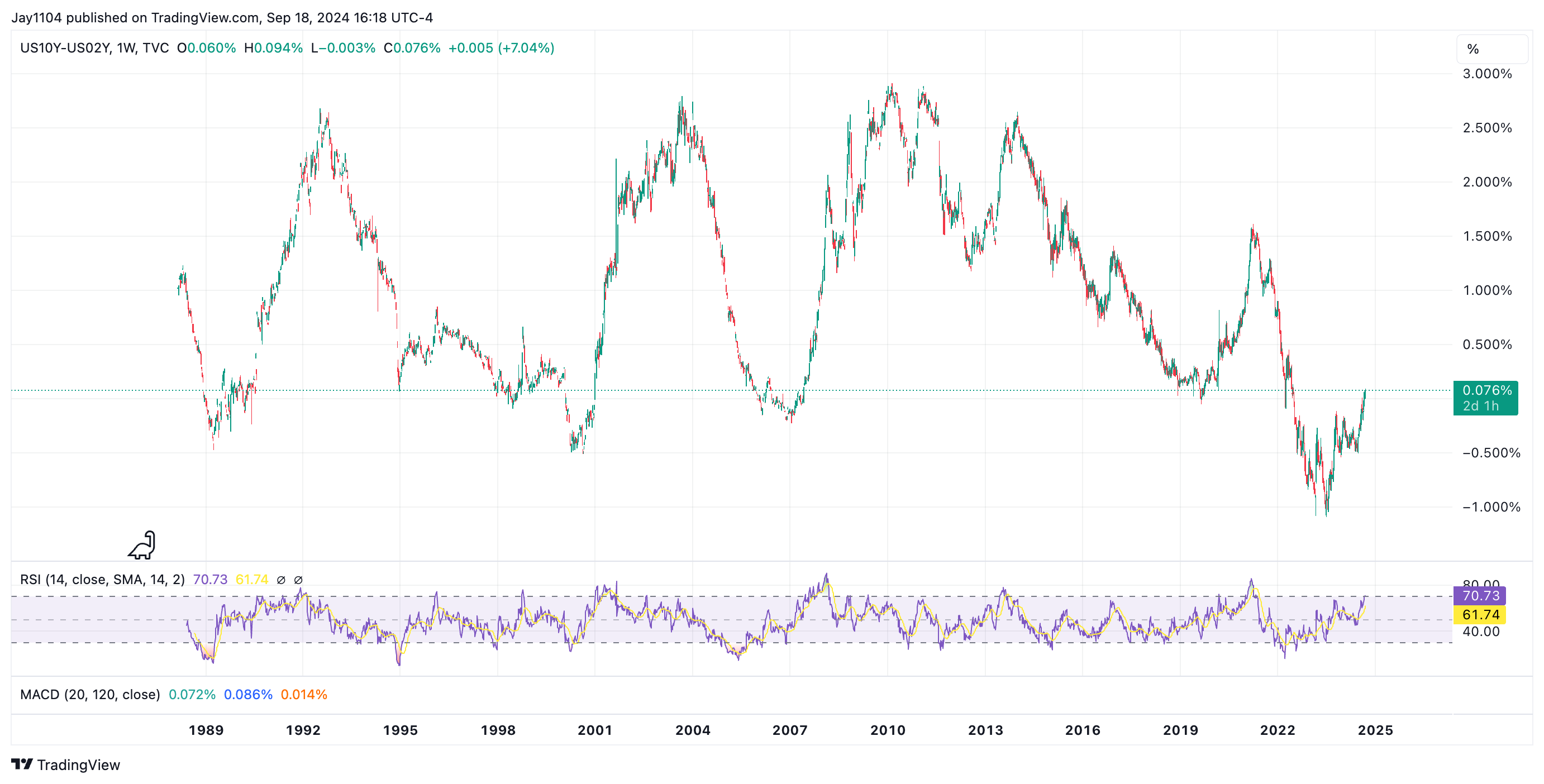
2. S&P 500 Faces 2B Top
Yesterday’s move in the S&P 500 created a 2B top. The rally pushed well above the July 16 highs, only to close lower and below those previous highs. In my experience, 2B tops have worked fairly well, though not always. If this is a 2B top, we could see a move below the August 5 levels, and it starts.
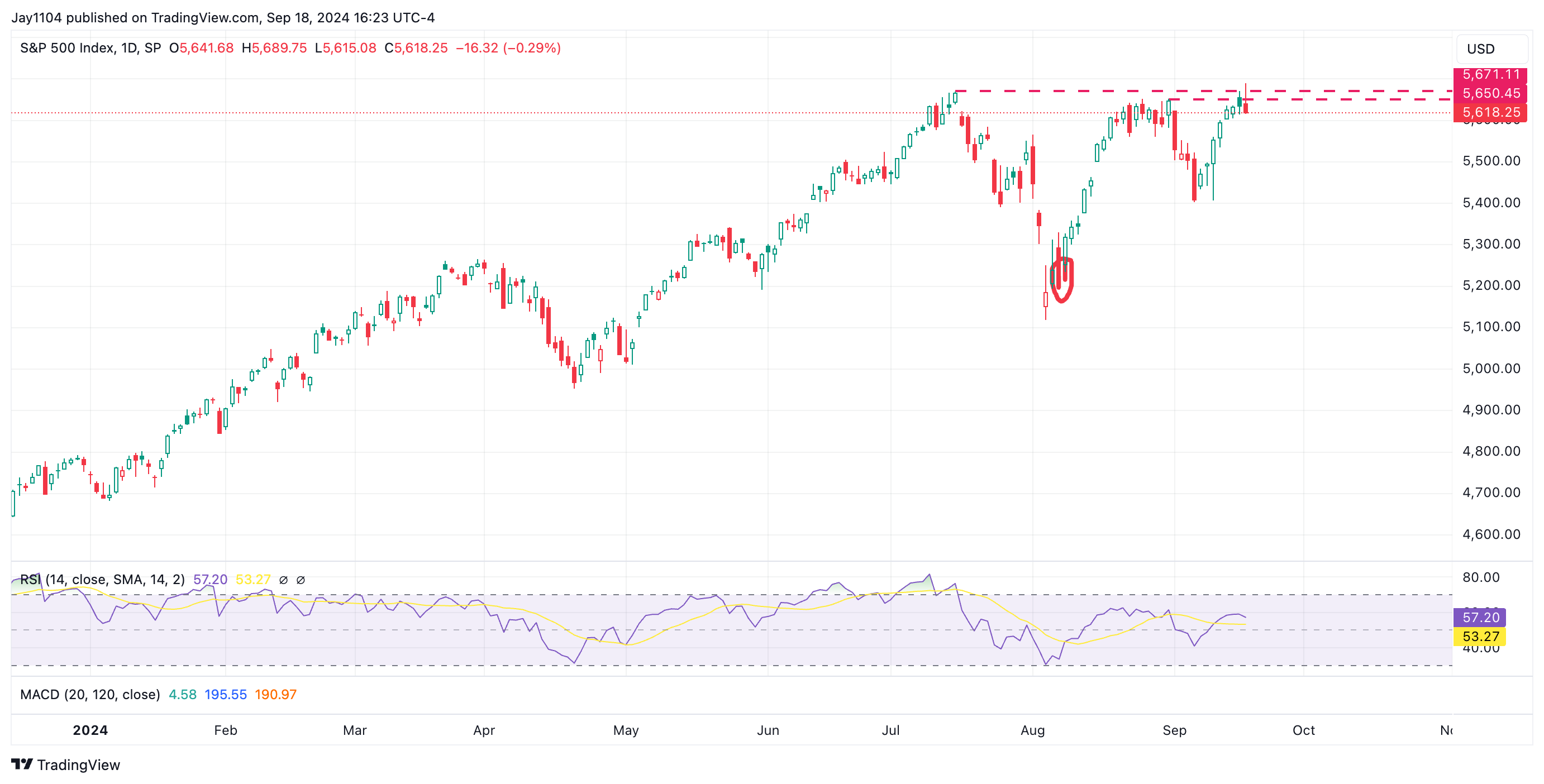
3. Nasdaq 100 Needs to Break Higher Again
The NASDAQ 100 climbed to the 78.2% retracement level and tested the downtrend for a second consecutive day. So far, it has been unable to make a convincing move higher. At this point, it needs to break higher because if it doesn’t happen today, the weight of the evidence suggests it could move lower.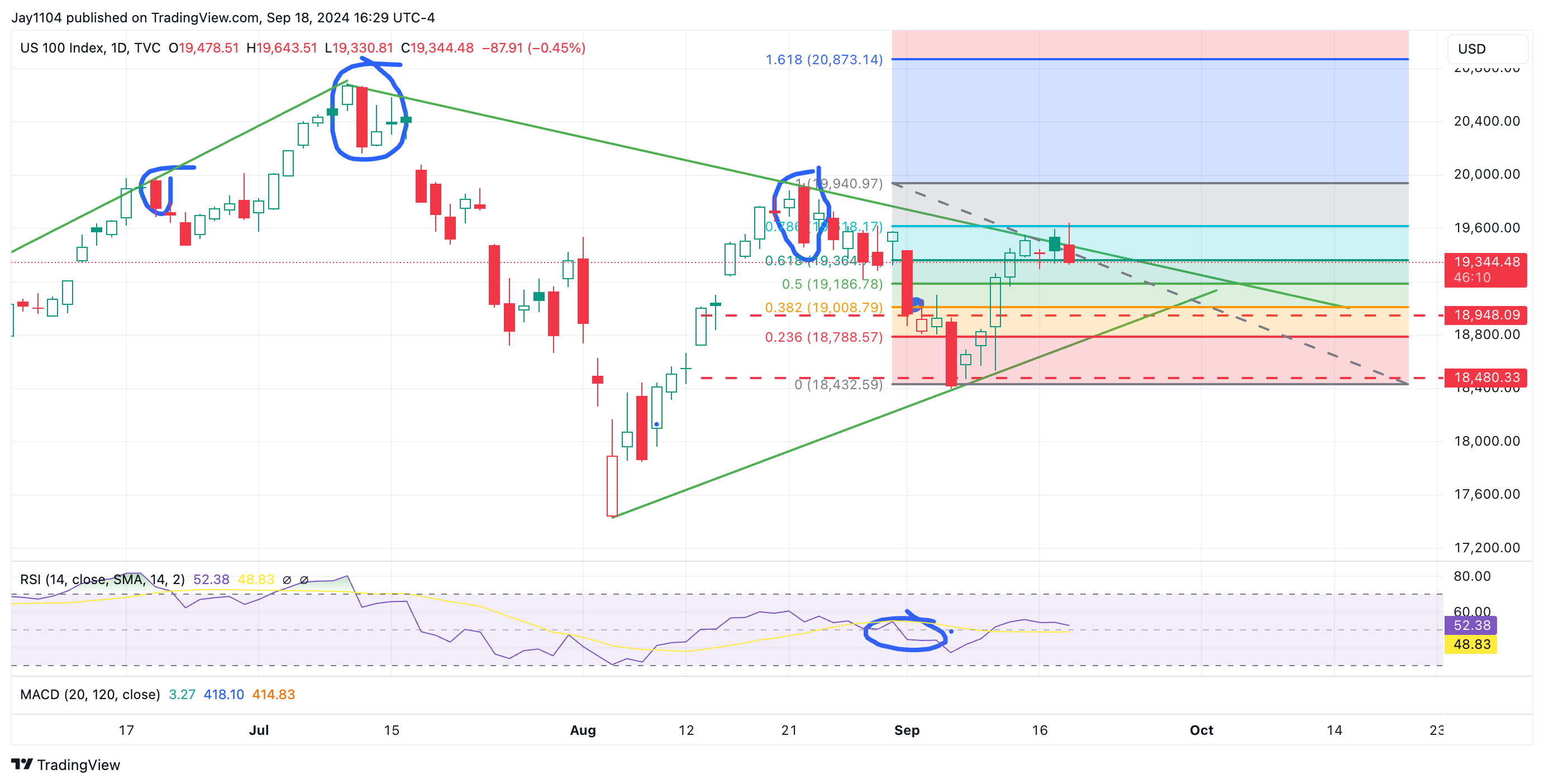
4. Semis Reach Downtrend Support
The SMH reached the downtrend and the 61.8% retracement level for what appears to be the third time. Semiconductors are a crucial sector in this market, and if they aren’t moving higher, I don’t believe the S&P 500 or NASDAQ will either.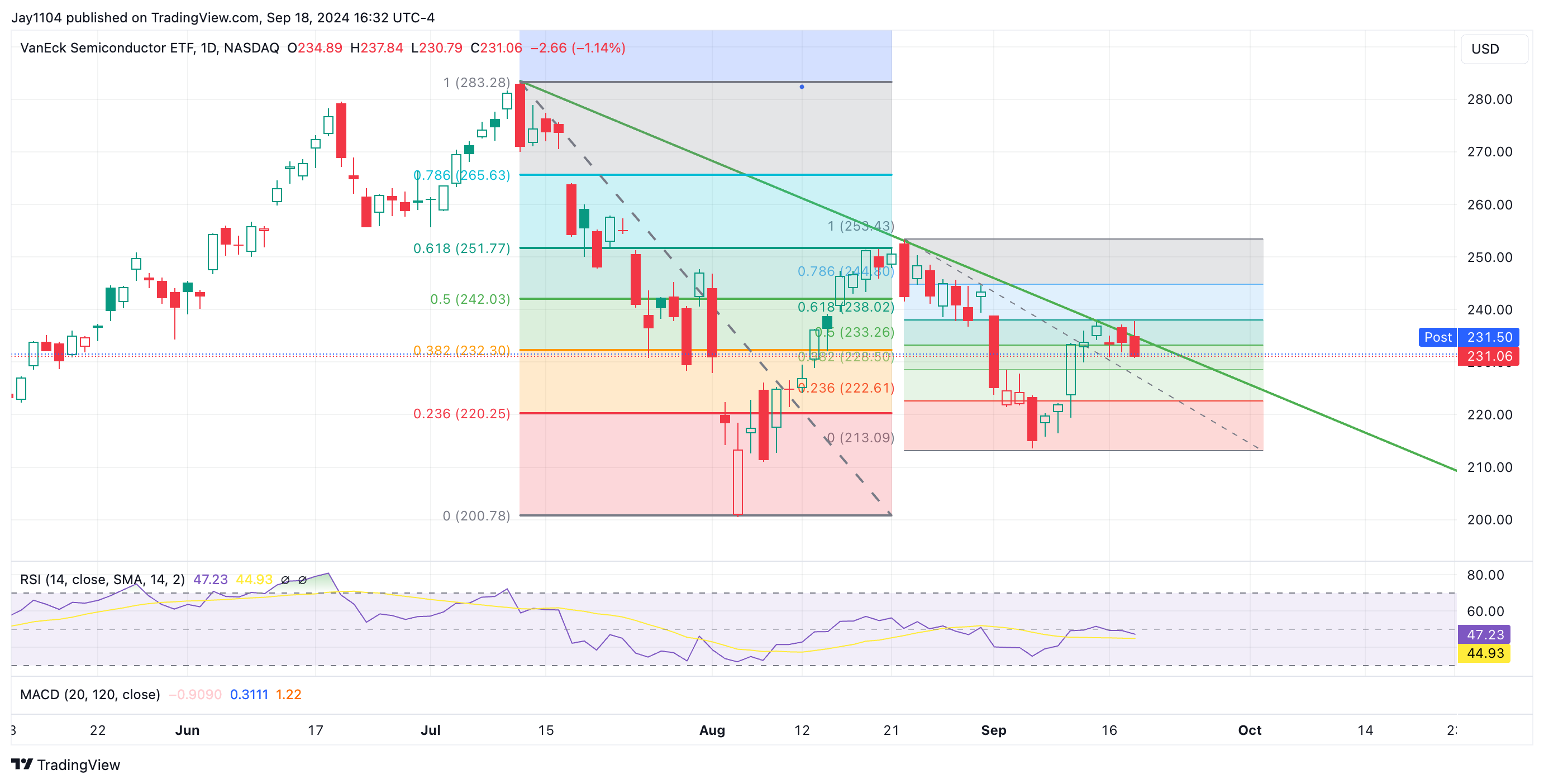
Much of that can be tied back to Nvidia (NASDAQ:NVDA), which has struggled to break above the $120 level. Now that the stock is trading below $115, the question is whether the lower-level call deltas will start to decay as time value diminishes.
If Nvidia can’t move higher, then the semis can’t move higher, and neither can the S&P 500 nor the NASDAQ 100.
5. USD/CAD Eyes Breakout
My biggest question is whether the USD/CAD will break above the 1.36 level, as it continues to be an excellent tool for spotting S&P 500 tops and bottoms. If the USD/CAD can weaken past 1.36, I believe it will confirm that we, indeed the S&P 500 is heading lower.
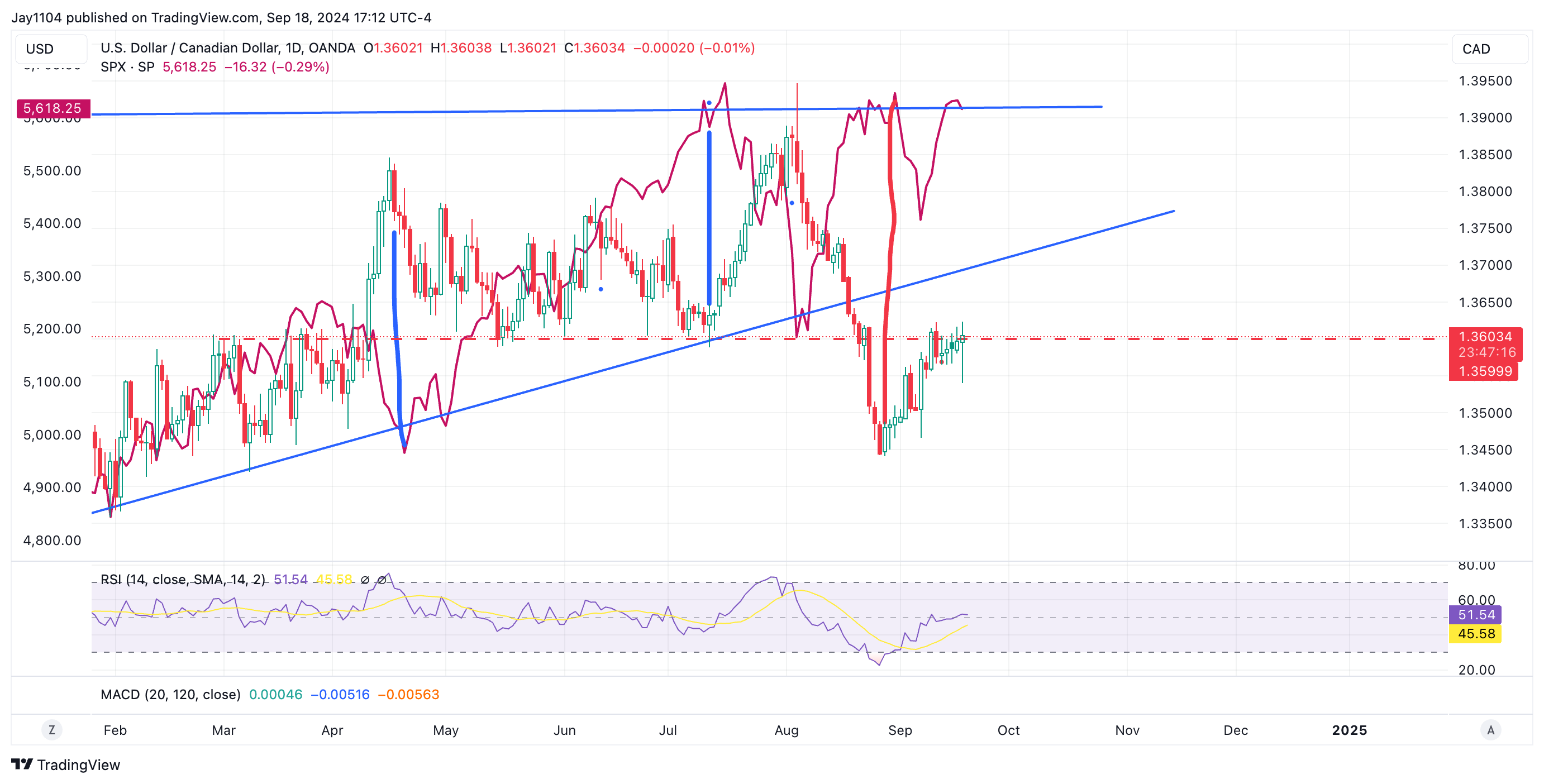
We received margin numbers from FINRA, which showed that margin levels fell in August. This marks the fourth consecutive month without an increase in margin levels, which could explain why the stock market has been stuck.
Additionally, reserve balances dropped yesterday to $3.22 trillion. Now that the USD/JPY has been cut off as a funding currency, the S&P 500 is tracking a few days behind reserve changes. As a result, we may be approaching a point today where a significant drop could be ready to materialize.
